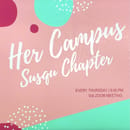This summer, the only book I enjoyed reading during my commute to and from my internship was The Hate You Give by Angie Thomas. It tells the story of 16 year old Starr who takes on life as a young black girl living in a high crime neighborhood called Garden Heights, but she also attends a predominantly white private high school almost an hour away called Williamson Prep. Before I unpack too much of the storyline, you should know that this book most certainly unpacks a lot of this country’s truths whether that’s white privilege, racism, or police brutality to name a few. The storyline is based on Tupac Shakur’s recognizable acronym – T.H.U.G L.I.F.E (The Hate You Give Little Infants F***s Everybody), in other words, the negative things you feed children of this world will turn and bite everyone in the butt. For this film that means young black men and women living in low income, predominantly black communities are joining gangs, getting killed, or selling drugs because the system that is supposed to protect them is set up to be used against them alongside other factors. As for the film, there are so many heavy moments that even as a reader of the book, the film will leave you speechless and make you reflect on what life is like for the black person in American and the injustices they face whether you are black or not. If you haven’t seen the film just yet here’s a list of things the movie does touch on:
1. The cast is predominately black
It’s a rarity, and it’s sad to admit. However, lately with more black directors and screen writers in Hollywood there’s more representation which gives me hope. The director of this film is black himself – George Tillman Jr.
2. The Black Panther’s Party Ten-Point Program is recited
Starr’s dad gives her and her siblings the talk – and not the birds and the bees – it’s what to do if you’re ever stopped by a police officer. He then has them memorize the Ten-Point program that speaks on self defense goals and directions to take as a black people.
3. Not much has changed for the better
Many would argue that racism and slavery doesn’t exist anymore, but that is far from the truth. It’s embedded in this country’s foundation. In the film there’s a huge protest against police brutality and seeing that on the big screen says a lot about the advancement of this country.
4. Code Switching is a thing
Definition: The practice of alternating between languages or varieties of languages in communication. In the movie, Amandla Stenburg’s character Starr does a lot of this when she goes back and forth from Garden Heights to Williamson. Starr admits that it’s hard to fit in sometimes if she’s just herself, and these two worlds just won’t allow her because she’s not enough for either.
5. Mental Health Awareness is not prevalent in black communities
Like in the film, mental health is not talked about at all. In black communities like Garden Heights, struggling with mental health is something you don’t speak on, you’re just told to deal with the consequences on your own.
Although this movie was adapted from a young adult book, and may sound like it’s full of negativity and sadness, it does give a clear picture of the reality we are living today. So, it’s important to reflect and break the cycle we are in and speak up as black people even when those around us force us not to.


